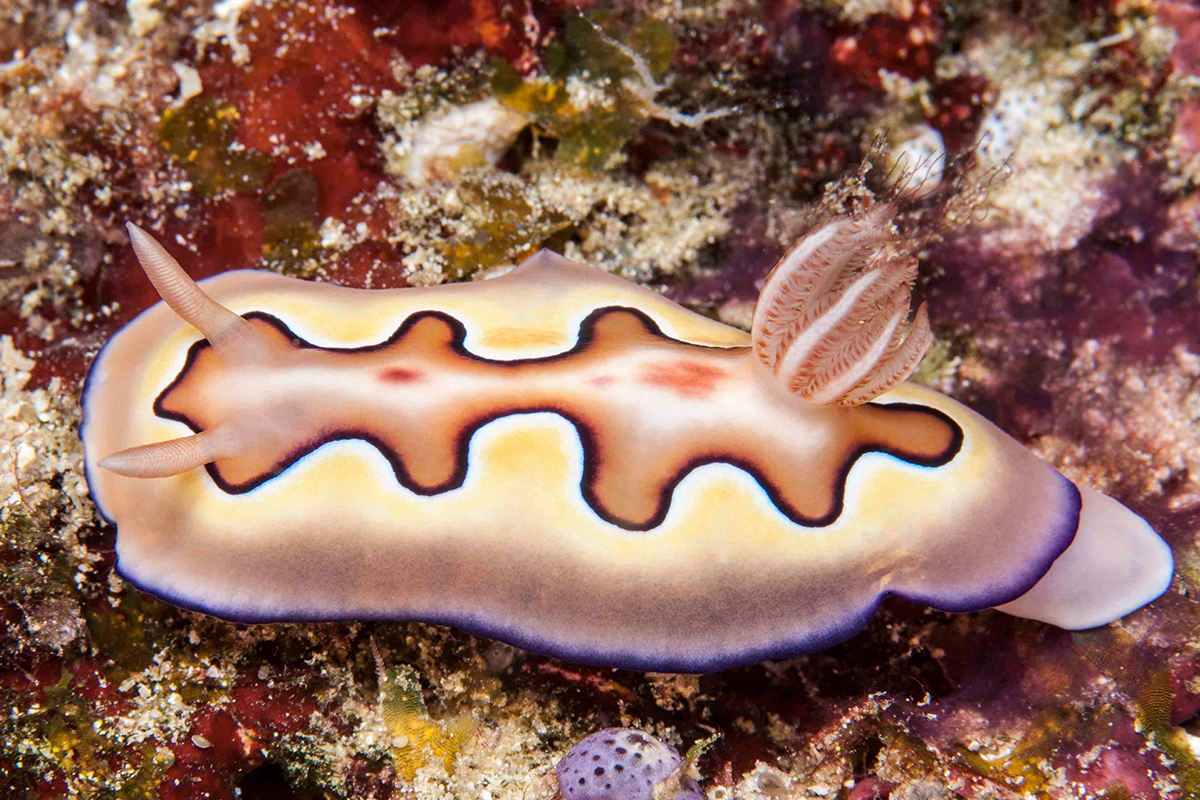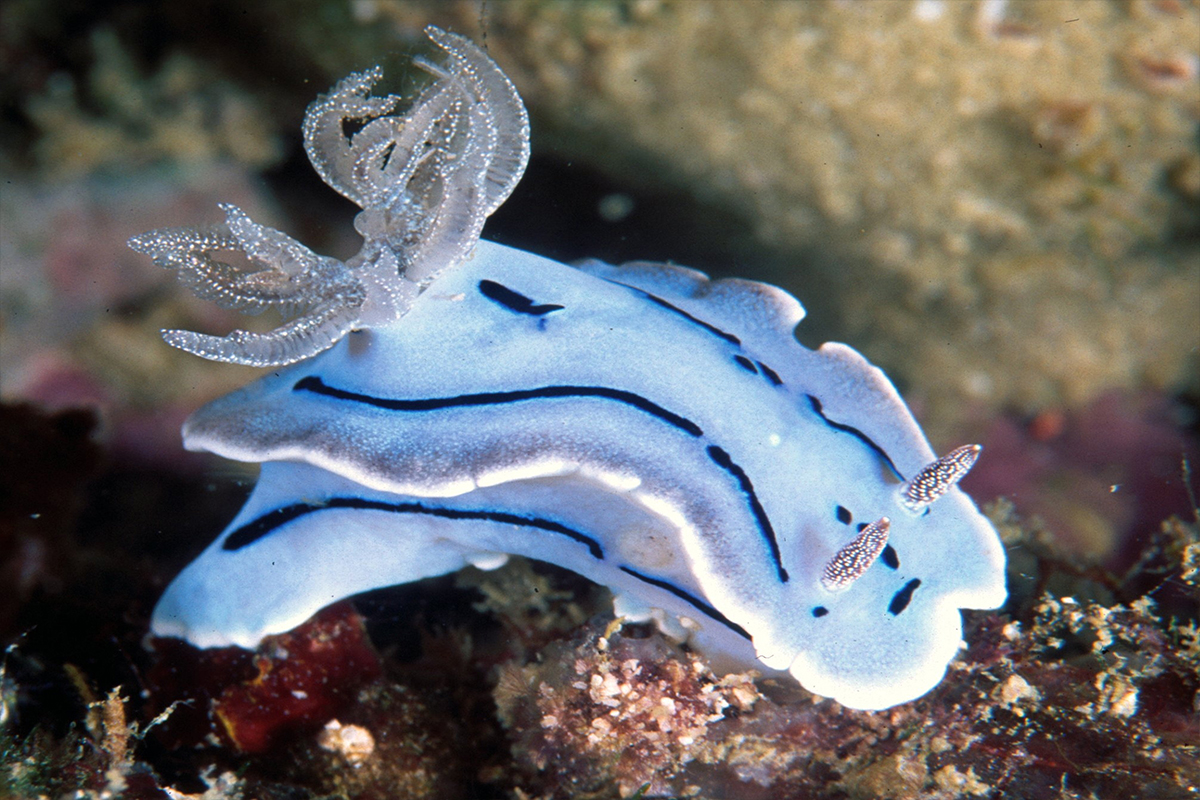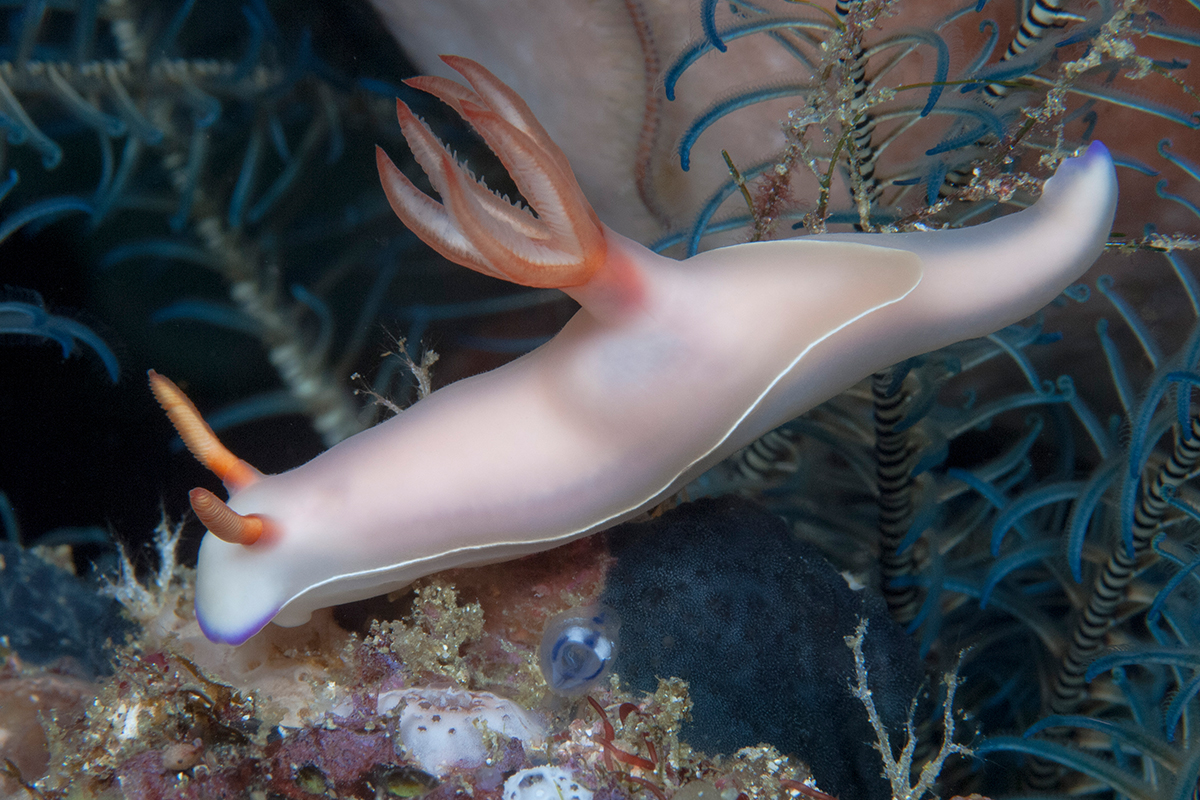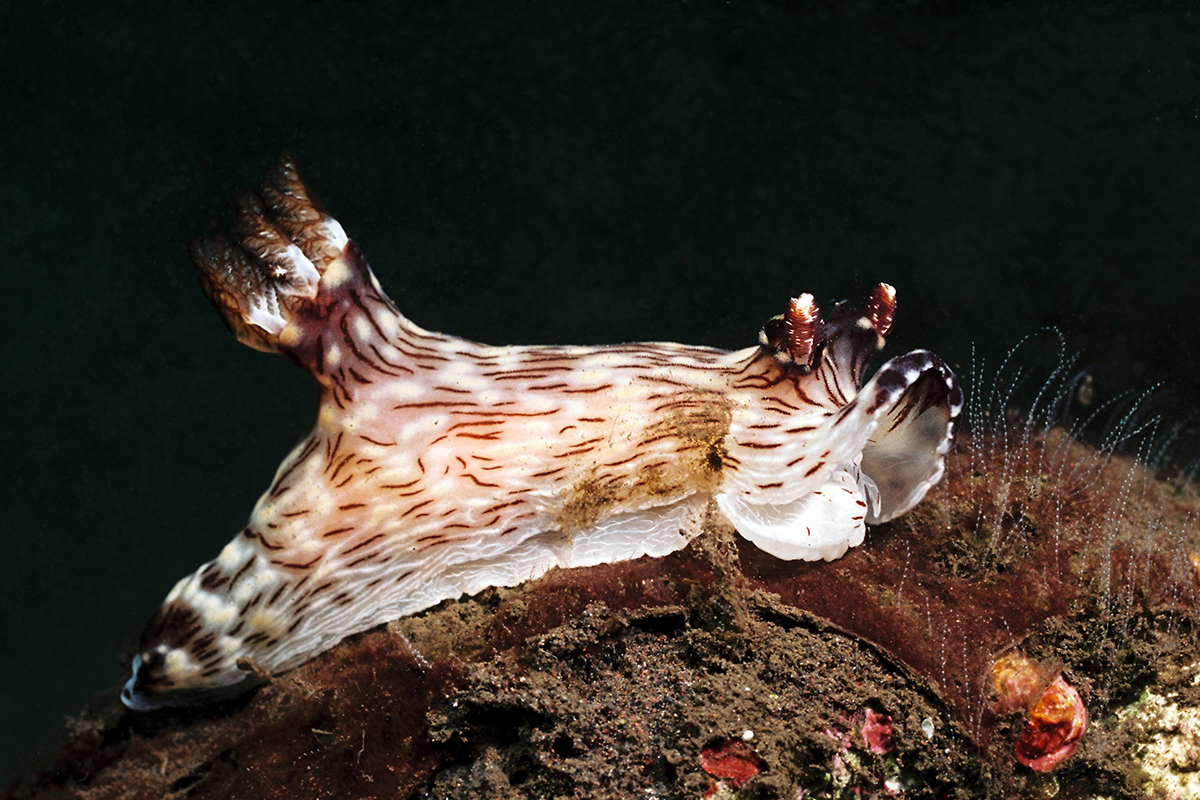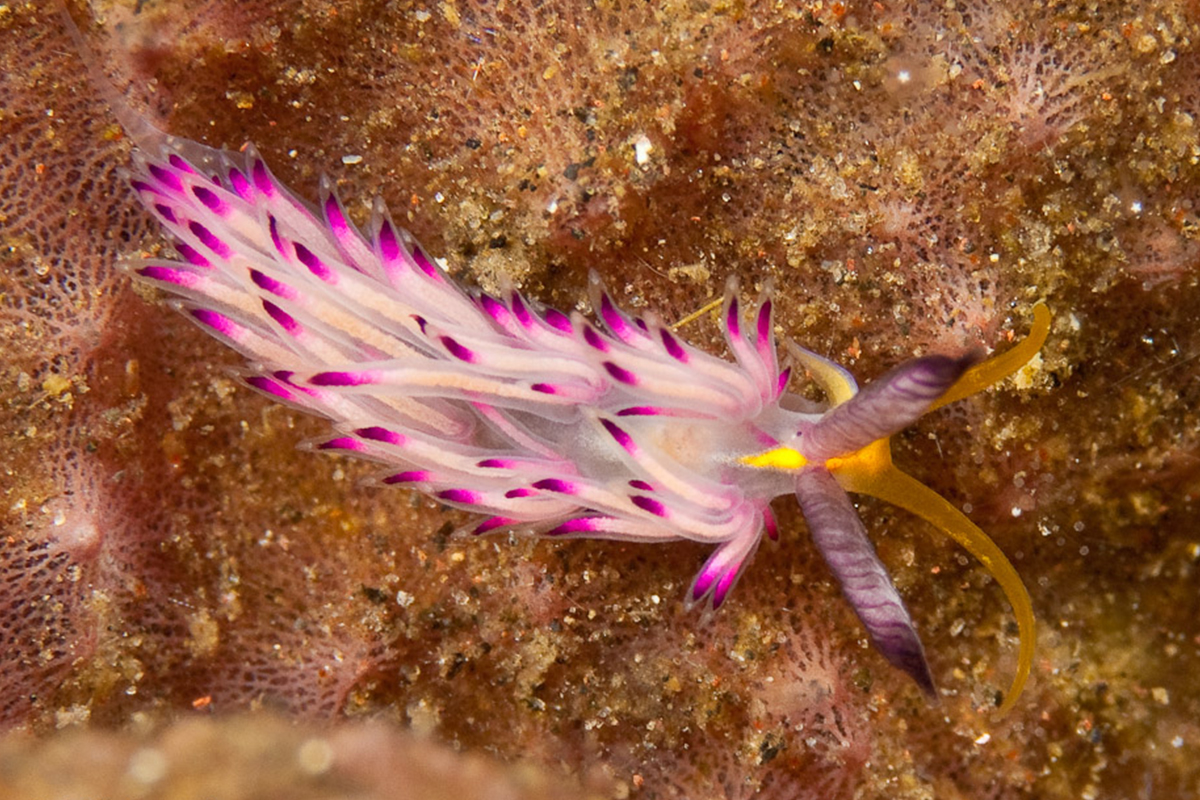Dive into the magical world of nudibranchs in Bali
For divers in Bali the big payoffs may seem like the manta rays, mola mola and schools of tropical fish, but actually some of the most incredible creatures can be found in the muck. Bali’s east coast has some of the best muck diving in the region where you will find a huge variety of nudibranchs. If you’re willing to do a little searching in the sand the nudibranchs in Bali will definitely not disappoint!
What is a nudibranch?
The name nudibranch comes from the Latin word ‘nudus’ which means ‘naked’ and the Greek word ‘brankhia’ which means ‘gills’. These creatures are sea slugs, but not all sea slugs are nudibranchs. Some even have a broad flat ‘foot’ like a slug or a snail that they use to get around on the sea floor.
There are over 3000 known species of nudibranchs and more are being discovered all the time. The range of colours, patterns, and shapes is absolutely breathtaking. Thanks to their amazing appearance they are very good at camouflaging themselves in coral. Unfortunately, they are still food for many sea creatures and have a life span of only a few months.
Thankfully nudibranchs are hermaphrodites so are ready to reproduce at any time when they meet another nudi. They can change to accommodate either male or female. This gives them the best chance to make more nudibranchs!
Another amazing fact about nudibranchs is that some are solar powered! Some species eat green algae and use the energy from the chloroplasts by photosynthesizing them in their bodies. This energy can sustain the nudibranch for months, which is sometimes a whole lifetime for them. It’s sort of like powering your body by sunbathing.
Where to find nudibranchs in Bali
Nudibranchs live in oceans all over the world in both shallow and deep water, but finding them in Bali is easiest while muck diving. Between Lotus Bungalows Candidasa and Padang Bai is Amuk Bay, one of the best muck diving spots on the island. Fantastic species like the Desirable Flabellina Aeolid Nudibranch and the Dark Margin Glossodoris Nudibranch have been spotted here.
You can also find nudibranchs at Amed, Salayar, Tulamben, the Liberty Wreck, and Gilimanuk. All of these dive sites will allow you to discover the incredible variety of nudis that Bali offers.
Photographing nudibranchs
You’re definitely going to want to photograph all the amazing nudibranchs you see in Bali. Trying to describe them with all their crazy colours and shapes would be way too much of a challenge! So here are some tips on how to best photograph nudibranchs while diving.
- For shooting macro subjects like nudis you’ll need to get low, get close and shoot upwards. These are the basics of macro photography but especially important when shooting nudibranchs.
- Always use a high shutter speed. Keeping out any ambient light will make the contrast of the nudis bright colours even more striking.
- Compose your subject against negative space to again make the contrast stronger.
- Notice the symmetry of the nudibranch’s body. Most nudis are exactly the same on each half of their bodies so it’s not necessary to always get a ‘portrait’ photo.
- Pay close attention to the background to make sure your nudibranch doesn’t lose its rhinophores or patterns.
- Attention to depth of field can make an ordinary photo extraordinary. It’s important to keep rhinophores sharp to but other parts of the body can be out of focus.
- Take advantage of black background opportunities – If the subject is perched up high, create a black background. But be careful of slugs with black Rhinophores as they will easily blend in with the background.
- Experiment with your camera settings. It’s always better to play around and see what kind of images you can get with different settings. Take plenty of shots and you’ll be sure to have some great ones to choose from.
Are you ready to discover the magical world of nudibranchs?
Once you’ve seen nudibranchs on a dive you’ll be dying to find more and more. There is so much variety it’s almost an addiction to see what weird and wonderful pattern or shape you’ll find next. What colour or pattern of nudi would you be most shocked to see? We’d love to hear your thoughts in the comments section below!

